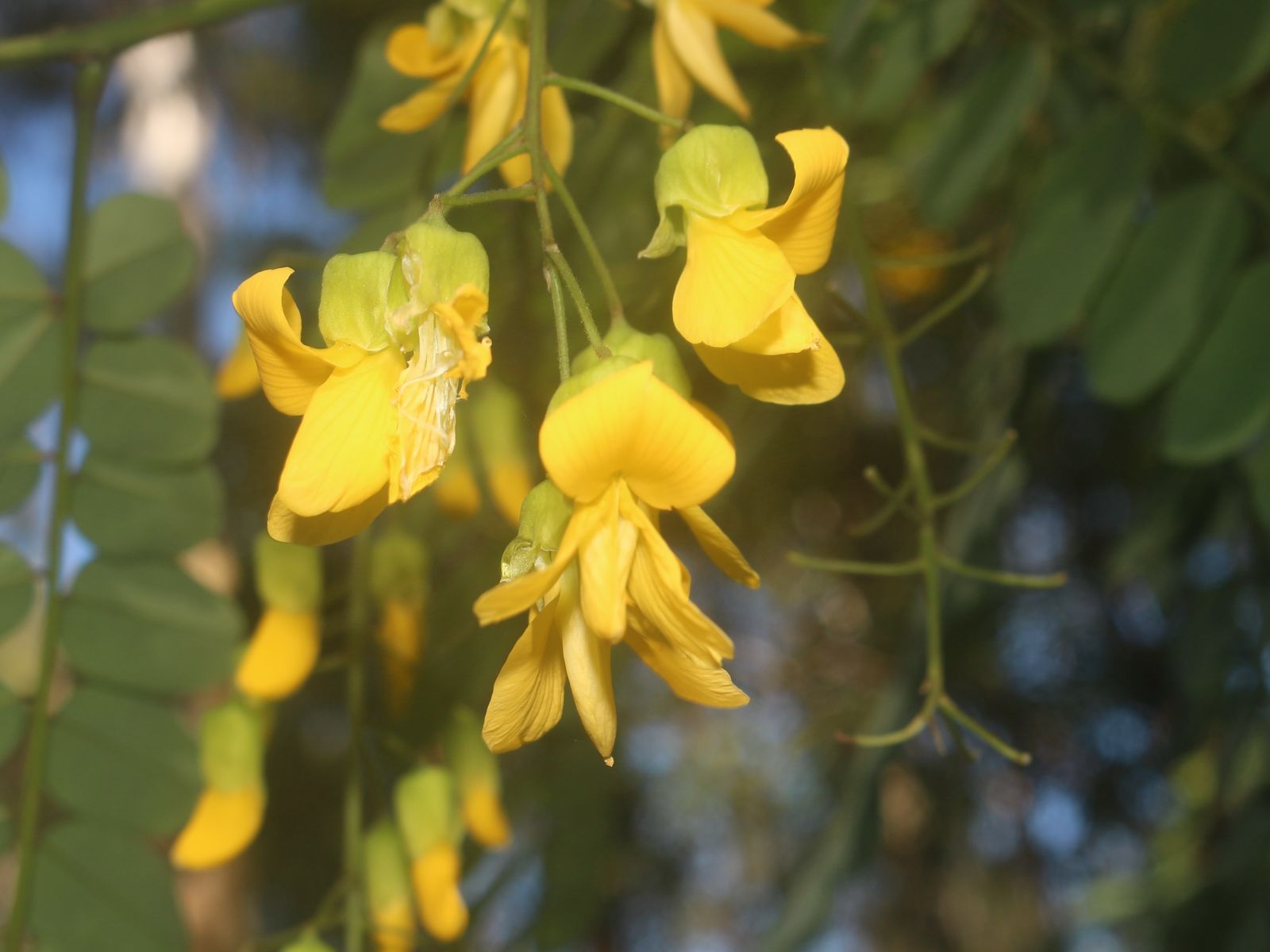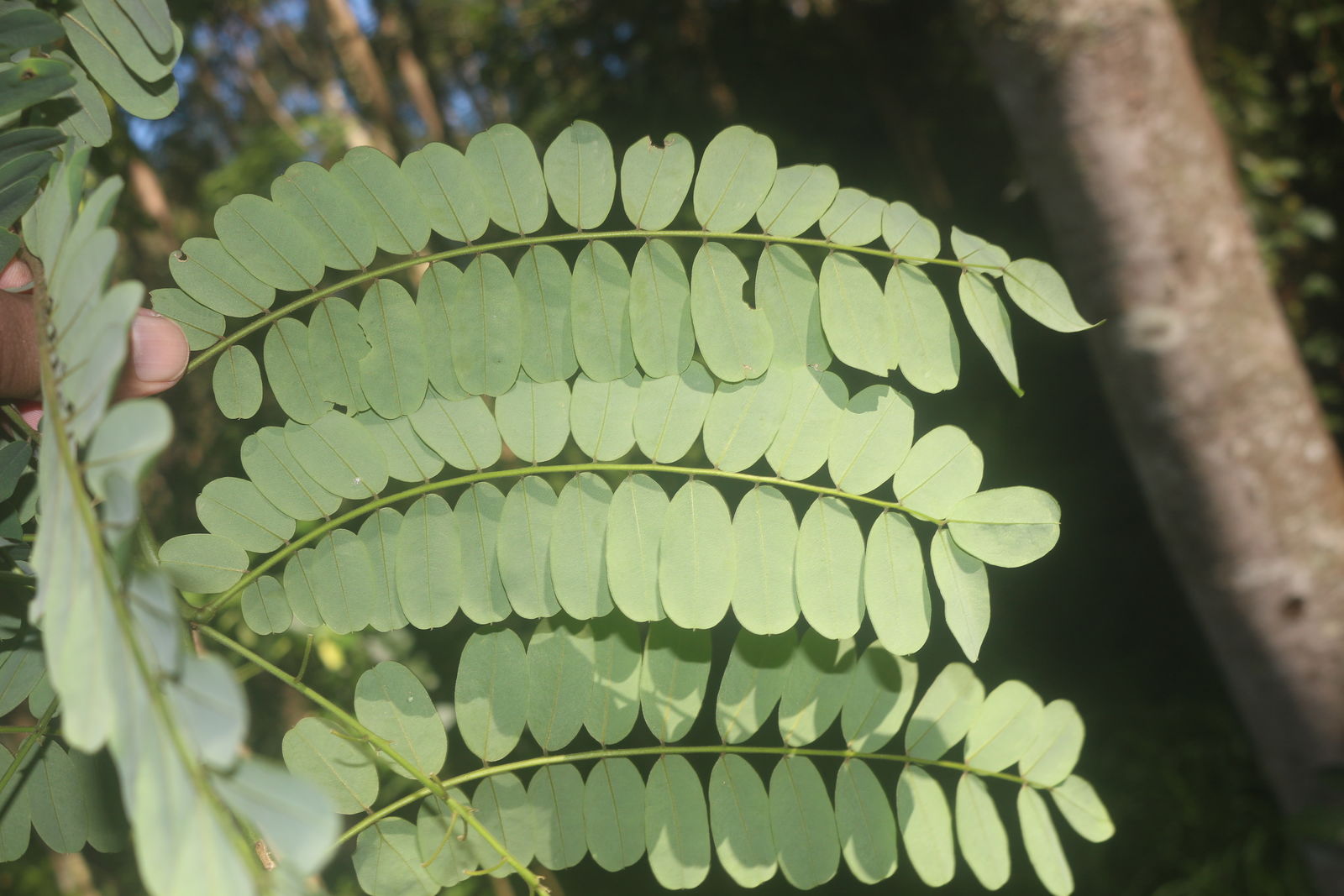Golden Wisteria
calpurnia aurea
Also known as: ["African Wisteria","Golden Wisteria Tree"]
Overview
A deciduous shrub or small tree native to southern Africa, known for its bright yellow, pea-like flowers that bloom in spring.
Benefits & Perks
["fragrant flowers","wildlife attractant (bees, butterflies, birds)"]
Botanical Classification
| Phylum: | Magnoliophyta |
| Class: | Magnoliopsida |
| Order: | Fabales |
| Family: | Fabaceae |
| Genus: | Calpurnia |
| Botanical Name: | Calpurnia aurea |
Plant Characteristics
Basic Information
- Category: Flowers
- Suitable Location: indoor pot or sheltered outdoor location
- Suitable For:
- Is Weed: No
- Allergenicity: low
Environmental Needs
- Climate: {"temperatureRange":"10–30°C"}
- Hardiness: {"zones":"9–11"}
- Misting: every 2–3 days in dry climates, rarely required otherwise
- Drainage: Fast-draining to prevent waterlogging.
- Soil Type: Well-draining potting mix with added perlite or sand.
Maintenance Level
- Maintenance Level: moderate
- Toughness Level: moderate
- Pruning Frequency: Annually in late winter or early spring; light pruning as needed year-round.
- Pruning Intensity: Moderate; remove up to one-third of growth if overgrown.
Care Details
Ideal Sunlight Coverage:
Bright indirect light for 6–8 hours daily; adjust to morning sun in winter and dappled shade in summer.
Sunlight Tolerance Tips:
Acclimate gradually to direct sun, protect from harsh midday rays, move indoors during extreme heat or cold.
Care Requirements
Care Difficulty
moderatemoderate
Sunlight
partial shade to full sun
Rotate plant weekly for even growth; use sheer curtains to filter intense light; avoid direct afternoon sun.
Watering
every 7–10 days during active growth, reduce in winter
Water thoroughly until it drains from the bottom, allow soil to dry between waterings, avoid wetting foliage.
Soil
well-draining, loamy soil with organic matter
pH: Slightly acidic to neutral (pH 6.0–7.0).
Ensure pots have drainage holes; avoid compacted soil; top-dress with compost annually.
Temperature
Prefers 65–75°F (18–24°C); tolerates 50–85°F (10–29°C) with protection from extremes.
Avoid placing near drafty windows; use a thermometer to monitor microclimates; shield from extreme heat/cold.
Fertilizing
every 4–6 weeks during growing season, none in winter
Fertilize after watering to prevent root burn; flush soil occasionally to prevent salt buildup; adjust for plant size.
Propagation
Methods
Stem cuttings in spring/summer.
Step-by-Step Propagation Guide
- Take cutting, let callus, apply hormone, plant in medium, maintain humidity, wait for roots.
Best Time: Spring or early summer when growth is active.
Environment
High humidity (70–90%), warm (70–75°F/21–24°C), indirect light.
Medium
Well-draining mix of peat and perlite or cactus soil.
Hormone
Optional but recommended for faster rooting.
Timeline
Roots in 3–6 weeks; establish in 2–3 months.
Tools Needed
Pruners, rooting hormone, pots, humidity dome, misting spray.
Quick Tips
Use healthy, non-flowering stems; keep consistently moist but not waterlogged; provide bottom heat if possible.
Pruning & Repotting
Pruning Guide
Method
Pinching, heading back, thinning out crowded stems.
Pruning Plan
Remove dead/damaged growth, shape plant, encourage bushier growth, improve air circulation.
Tools
Pruning shears, sterilizing solution, gloves.
Checklist
Sterilize tools, prune at nodes, remove dead/diseased parts, clean up debris.
Repotting Guide
Best Season
Spring before active growth begins.
Pot Size
One size larger pot (2–3 inches wider in diameter).
Method
Remove plant gently, trim roots if needed, place in new pot with fresh soil, water lightly.
Suggestions
Repot every 2–3 years or when roots fill the pot; necessary to refresh soil and provide space.
Checklist
Choose right pot, prepare soil, handle roots carefully, water after repotting, place in shade temporarily.
Advanced Care Tips
Watering Mastery
Watering Checklist
Check soil moisture, water thoroughly, ensure drainage, adjust for season.
How to Apply Water Properly
Water directly at the root zone, ensure even saturation to a depth of 6–8 inches, allow excess water to drain, water in the morning to reduce evaporation.
Watering Schedule Tips
Water deeply when the top 1–2 inches of soil are dry; reduce frequency in winter to prevent root rot.
Soil Improvement
Add perlite or coarse sand for drainage, incorporate organic matter for fertility, use cactus mix as base.
Temperature Stress Management
Signs of Temperature Issues
Leaf drop, yellowing, stunted growth, or wilting during sudden temperature shifts.
Cold Stress
Slows growth, causes leaf drop, may lead to root damage if temperatures drop below 50°F (10°C).
Solution: Move to a warmer location, insulate pots, avoid cold drafts, protect from frost.
Hot Stress
Wilting, leaf scorch, reduced flowering, or leaf drop during prolonged heat above 85°F (29°C).
Solution: Provide shade, increase humidity, water more frequently, ensure good air circulation.
Fertilizing Guide
Fertilizing Checklist
Check season, dilute correctly, apply to soil, avoid foliage, flush periodically.
Fertilizing Method
Use balanced liquid fertilizer diluted to half strength every 4–6 weeks during growing season (spring/summer); cease in fall/winter.
Common Problems & Solutions
Toxicity Warning
Cats
Slightly ToxicCats may experience mild gastrointestinal discomfort if they consume the seeds or roots of Calpurnia aurea. The plant is not highly toxic but can cause mild irritation.
⚠️ Symptoms:
🌿 Toxic Parts:
⚡ Toxic If:
if eaten
Dogs
Slightly ToxicIn dogs, ingestion of Calpurnia aurea seeds and roots can lead to mild gastrointestinal upset. The plant does not pose a significant threat but should be consumed in moderation.
⚠️ Symptoms:
🌿 Toxic Parts:
⚡ Toxic If:
if eaten
Humans
Slightly ToxicCalpurnia aurea contains compounds that can cause mild gastrointestinal distress and discomfort when ingested. The toxicity is primarily localized to the seeds and roots, which contain higher concentrations of these compounds.
⚠️ Symptoms:
🌿 Toxic Parts:
⚡ Toxic If:
if eaten
Frequently Asked Questions
Q: Does Calpurnia aurea require full sun?
A: Yes, it thrives in full sun to partial shade.
Q: Is Calpurnia aurea suitable for container gardening?
A: It can be grown in large containers but prefers open ground.
Q: How often should Calpurnia aurea be watered?
A: Water moderately, allowing the soil to dry slightly between waterings.
Quick Reference
| Family: | Fabaceae |
| Care: | moderate |
| Light: | partial shade to full sun |
| Water: | every 7–10 days during activ |
Get Expert Care Tips
Download the Plantious app for personalized care reminders and plant identification!
Google Play App Store








